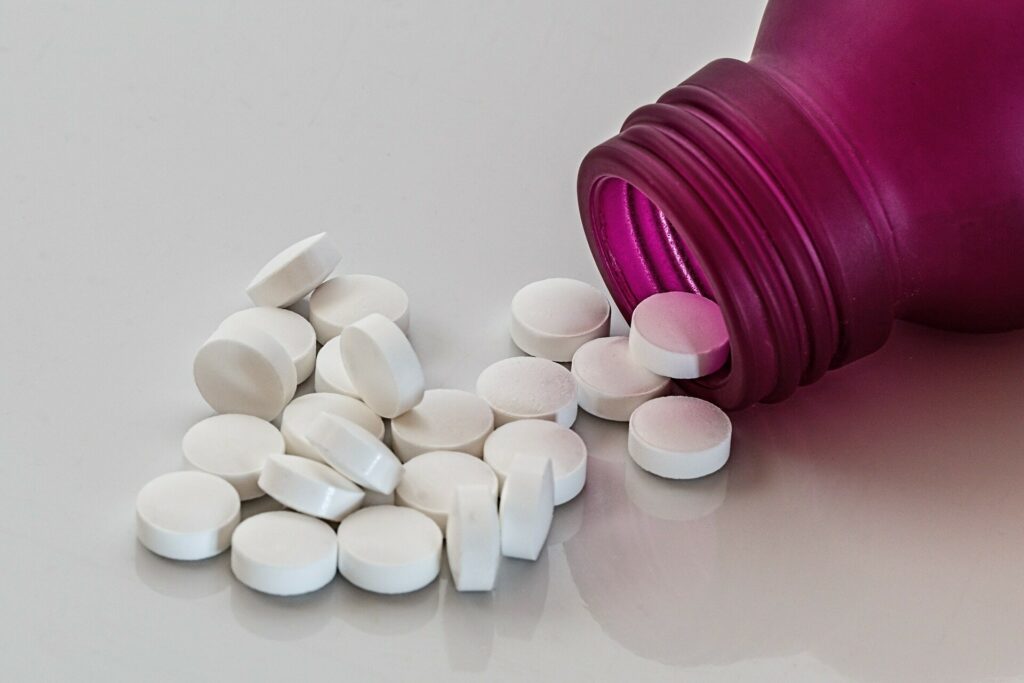Diabetes mellitus type 2 (DMT2) is a chronic metabolic disorder characterized by insulin resistance and impaired insulin secretion, leading to elevated blood glucose levels. Proper management of DMT2 involves lifestyle modifications, such as a healthy diet and regular exercise, but medications play a crucial role in controlling blood sugar levels. In this blog, we will delve into the various Medications for Diabetes Mellitus Type 2, their mechanisms of action, side effects, and considerations for personalized treatment plans.
Contents
- 1 Why Do People Prefer Taking Medications for Diabetes Mellitus Type 2?
- 2 List of Medications for Diabetes Mellitus Type 2
- 2.1 Metformin
- 2.2 Sulfonylureas
- 2.3 Dipeptidyl Peptidase-4 (DPP-4) Inhibitors
- 2.4 Thiazolidinediones (TZDs)
- 2.5 Alpha-Glucosidase Inhibitors:
- 2.6 Sodium-Glucose Co-Transporter 2 (SGLT2) Inhibitors:
- 2.7 Glucagon-Like Peptide-1 (GLP-1) Receptor Agonists:
- 2.8 Insulin
- 2.9 Meglitinides
- 2.10 Bile Acid Sequestrants:
- 2.11 Combination Medications
- 2.12 Amylin Analogs:
- 2.13 Glinides
- 2.14 Colesevelam
- 2.15 Incretin Mimetics:
- 3 How To Take Medications for Diabetes Mellitus Type 2
- 4 Follow Up After Medications for Diabetes Mellitus Type 2
- 5 Conclusion
Why Do People Prefer Taking Medications for Diabetes Mellitus Type 2?
People with Type 2 diabetes often prefer taking medications for several reasons:
- Effective Blood Sugar Control: Medications are designed to help regulate blood sugar levels, which is a critical aspect of managing Type 2 diabetes. For many individuals, medications provide a reliable and effective way to keep blood glucose within a target range.
- Ease of Use: Medications are typically easy to administer, especially when compared to other treatment options like insulin injections. Many Type 2 diabetes medications come in oral form (pills) and can be taken with meals or as directed by a healthcare provider.
- Convenience: Medications offer a convenient option for individuals who may have a busy lifestyle or find it challenging to adhere to more complex treatment plans. Taking a pill as prescribed can be simpler than managing a complex diet or exercise routine.
- Reduced Dependency on Lifestyle Modifications: While lifestyle modifications, including diet and exercise, are crucial for managing Type 2 diabetes, some individuals may prefer medications as they allow for more flexibility in dietary choices. Medications can be seen as a supplement to lifestyle changes, providing additional support for blood sugar control.
- Medical Guidance: Prescribing medications for diabetes is often done under the guidance of healthcare professionals. Many patients trust their healthcare providers to prescribe the most appropriate medications based on their individual health status, making medication management a more structured and supervised approach.
- Fear of Injections: For individuals who are uncomfortable with needles, the idea of insulin injections may be a significant deterrent. Medications, especially oral ones, offer an alternative that doesn’t involve injections.
- Immediate Results: Some medications can provide relatively quick results in lowering blood sugar levels, offering a sense of immediate relief and assurance for individuals concerned about their diabetes management.
List of Medications for Diabetes Mellitus Type 2
Here is a comprehensive list of medications commonly used for the management of Type 2 diabetes:
Metformin

- Mechanism of Action: Metformin is a biguanide that primarily works by reducing the liver’s production of glucose and improving the body’s sensitivity to insulin. It also inhibits the absorption of glucose in the intestines.
- Administration: Typically taken orally, metformin is known for its efficacy in lowering blood sugar levels without causing excessive insulin release. It is often the first-line treatment for Type 2 diabetes due to its safety profile and minimal risk of hypoglycemia.
- Benefits: Metformin may also have additional benefits such as modest weight loss and improvement in lipid profiles.
Sulfonylureas
- Mechanism of Action: Sulfonylureas stimulate the release of insulin from the pancreas, helping to lower blood sugar levels. They act on the beta cells in the pancreas, enhancing insulin secretion.
- Administration: These medications are taken orally, usually before meals. Examples include glyburide, glipizide, and glimepiride.
- Considerations: While effective, sulfonylureas carry a risk of hypoglycemia, and their effectiveness may decline over time.
Dipeptidyl Peptidase-4 (DPP-4) Inhibitors
- Mechanism of Action: DPP-4 inhibitors increase the levels of incretin hormones, which stimulate insulin release and inhibit glucagon secretion. This helps regulate blood sugar levels.
- Administration: These medications are taken orally and have a lower risk of hypoglycemia compared to some other classes.
- Benefits: DPP-4 inhibitors can be used as monotherapy or in combination with other oral antidiabetic agents.
Thiazolidinediones (TZDs)
- Mechanism of Action: TZDs improve insulin sensitivity in peripheral tissues, such as muscle and adipose tissue. They activate peroxisome proliferator-activated receptors (PPARs).
- Administration: Examples include pioglitazone and rosiglitazone, taken orally.
- Considerations: TZDs may be associated with weight gain and an increased risk of heart-related issues. They are often prescribed cautiously and may be contraindicated in certain individuals.
Alpha-Glucosidase Inhibitors:
- Mechanism of Action: These inhibitors slow down the digestion and absorption of carbohydrates in the small intestine, reducing the post-meal rise in blood sugar.
- Administration: Examples include acarbose and miglitol, taken with meals.
- Benefits: Alpha-glucosidase inhibitors can be particularly useful in controlling postprandial hyperglycemia.
Sodium-Glucose Co-Transporter 2 (SGLT2) Inhibitors:
- Mechanism of Action: SGLT2 inhibitors reduce glucose reabsorption in the kidneys, promoting the excretion of excess glucose in urine.
- Administration: Examples include canagliflozin, dapagliflozin, and empagliflozin, taken orally.
- Benefits: SGLT2 inhibitors may provide cardiovascular and renal benefits, and they are associated with weight loss.
Glucagon-Like Peptide-1 (GLP-1) Receptor Agonists:
- Mechanism of Action: GLP-1 agonists mimic the action of the natural hormone GLP-1, stimulating insulin release, inhibiting glucagon secretion, slowing gastric emptying, and promoting satiety.
- Administration: Some are injectable, while others are available in oral form. Examples include exenatide, liraglutide, and dulaglutide.
- Benefits: GLP-1 agonists are associated with weight loss and may have cardiovascular benefits.
Insulin
- Mechanism of Action: Insulin is a hormone that lowers blood sugar levels by facilitating the uptake of glucose into cells. Different types of insulin have varying onset and duration of action.
- Administration: Insulin can be administered through injections or insulin pumps.
- Considerations: Insulin therapy may be necessary when other medications are insufficient in controlling blood sugar levels. It requires careful monitoring and adjustment.
Meglitinides

- Mechanism of Action: Meglitinides, including repaglinide and nateglinide, stimulate insulin secretion from the pancreas, similar to sulfonylureas. However, they have a faster onset and shorter duration of action.
- Administration: Taken orally before meals to help control postprandial blood sugar levels.
- Considerations: Meglitinides are often used in conjunction with other antidiabetic medications.
Bile Acid Sequestrants:
- Mechanism of Action: Medications like colesevelam primarily work to lower cholesterol levels but can also have modest effects on blood glucose by reducing the absorption of bile acids in the intestine.
- Administration: Taken orally as a pill with meals.
- Considerations: While not as potent as some other antidiabetic drugs, bile acid sequestrants may be used in combination therapy.
Combination Medications
- Mechanism of Action: Combination medications contain two or more antidiabetic agents in a single pill, providing synergistic effects to target multiple aspects of diabetes.
- Examples: Combinations may include metformin with sulfonylureas, DPP-4 inhibitors, SGLT2 inhibitors, or other classes.
- Administration: Taken orally, these combinations offer convenience and adherence benefits.
Amylin Analogs:
- Mechanism of Action: Amylin is a hormone that helps regulate blood sugar levels by slowing gastric emptying and suppressing glucagon secretion. Pramlintide is a synthetic amylin analog.
- Administration: Pramlintide is injected before meals to control postprandial glucose levels.
- Considerations: Amylin analogs are often used in combination with insulin for comprehensive blood sugar control.
Glinides
- Mechanism of Action: Glinides, such as mitiglinide, share similarities with meglitinides, stimulating insulin release from the pancreas.
- Administration: Taken orally before meals to enhance insulin secretion in response to food intake.
- Considerations: Glinides can be an alternative for individuals who may not tolerate or respond well to sulfonylureas or meglitinides.
Colesevelam
- Mechanism of Action: In addition to its cholesterol-lowering effects, colesevelam, a bile acid sequestrant, may modestly lower blood glucose levels by reducing bile acid reabsorption.
- Administration: Taken orally with meals as a tablet or powder.
- Considerations: Colesevelam is sometimes used as an adjunct therapy in diabetes management.
Incretin Mimetics:
- Mechanism of Action: Incretin mimetics, such as exenatide (Byetta) and liraglutide (Victoza), mimic the effects of incretin hormones, stimulating insulin release and inhibiting glucagon secretion.
- Administration: Typically injected, these medications can be once-daily or once weekly.
- Benefits: Incretin mimetics are associated with weight loss and may be suitable for individuals seeking these additional benefits.
How To Take Medications for Diabetes Mellitus Type 2

Here are some common guidelines for taking medications for type 2 diabetes:
- Consultation with a Healthcare Professional: Your healthcare provider will assess your overall health, medical history, and blood sugar levels to determine the most appropriate treatment plan for you.
- Dosage and Timing: Follow your healthcare provider’s instructions regarding the dosage and timing of your medications. It’s crucial to take medications as prescribed to maintain stable blood sugar levels.
- Blood Sugar Monitoring: Regularly monitor your blood sugar levels as advised by your healthcare professional. This helps you and your doctor assess the effectiveness of your treatment plan and make adjustments if necessary.
- Lifestyle Changes: Medications work more effectively when combined with a healthy lifestyle. This includes a balanced diet, regular physical activity, weight management, and avoiding tobacco and excessive alcohol consumption.
- Potential Side Effects: Be aware of the potential side effects of your medications. Report any unusual symptoms to your healthcare provider promptly.
- Regular Check-ups: Schedule regular follow-up appointments with your healthcare team to assess your progress and make any necessary adjustments to your treatment plan.
Follow Up After Medications for Diabetes Mellitus Type 2
Follow-up care is essential for managing diabetes mellitus type 2 effectively. Here are some general guidelines for follow-up after starting medications:
- Regular Monitoring: Attend regular check-ups with your healthcare provider. These appointments allow your doctor to monitor your blood sugar levels, assess the effectiveness of your treatment plan, and make any necessary adjustments.
- Blood Tests: Your healthcare provider may order periodic blood tests to check your A1c levels. This test provides an average of your blood sugar levels over the past two to three months, giving a broader picture of your diabetes control.
- Medication Adjustments: Based on your blood sugar levels and overall health, your doctor may adjust your medication dosage or change your prescription. It’s crucial to communicate any challenges or concerns you may be experiencing with your current treatment plan.
- Reviewing Lifestyle Changes: Discuss any lifestyle changes you’ve made, such as dietary modifications, exercise routines, or weight management. These factors can significantly impact your diabetes management.
- Education and Support: Regular follow-ups provide opportunities for your healthcare team to provide ongoing education about diabetes management, including updates on the latest treatments and technologies. They can also offer support and address any questions or concerns you may have.
- Foot and Eye Exams: People with diabetes are at an increased risk of foot and eye complications. Regular foot exams and eye screenings can help identify and address potential issues early on.
Conclusion
The management of DMT2 requires a personalized approach, considering factors such as individual patient characteristics, comorbidities, and preferences. Medications play a vital role in achieving glycemic control, and healthcare providers must carefully choose the most suitable options for each patient. Additionally, ongoing monitoring and adjustments to the treatment plan are essential to optimize outcomes and minimize potential side effects. Combining medication with lifestyle modifications remains the cornerstone of effective diabetes management. As research continues to evolve, new medications and therapeutic strategies may emerge, providing even more options for individuals living with diabetes mellitus type 2.
Do you want to get rid of diabetes? Join our online diabetes treatment program and reverse Diabetes naturally through lifestyle changes such as a Personalized Diet plan, Exercise, Yoga, dieticians, and health coaches.

